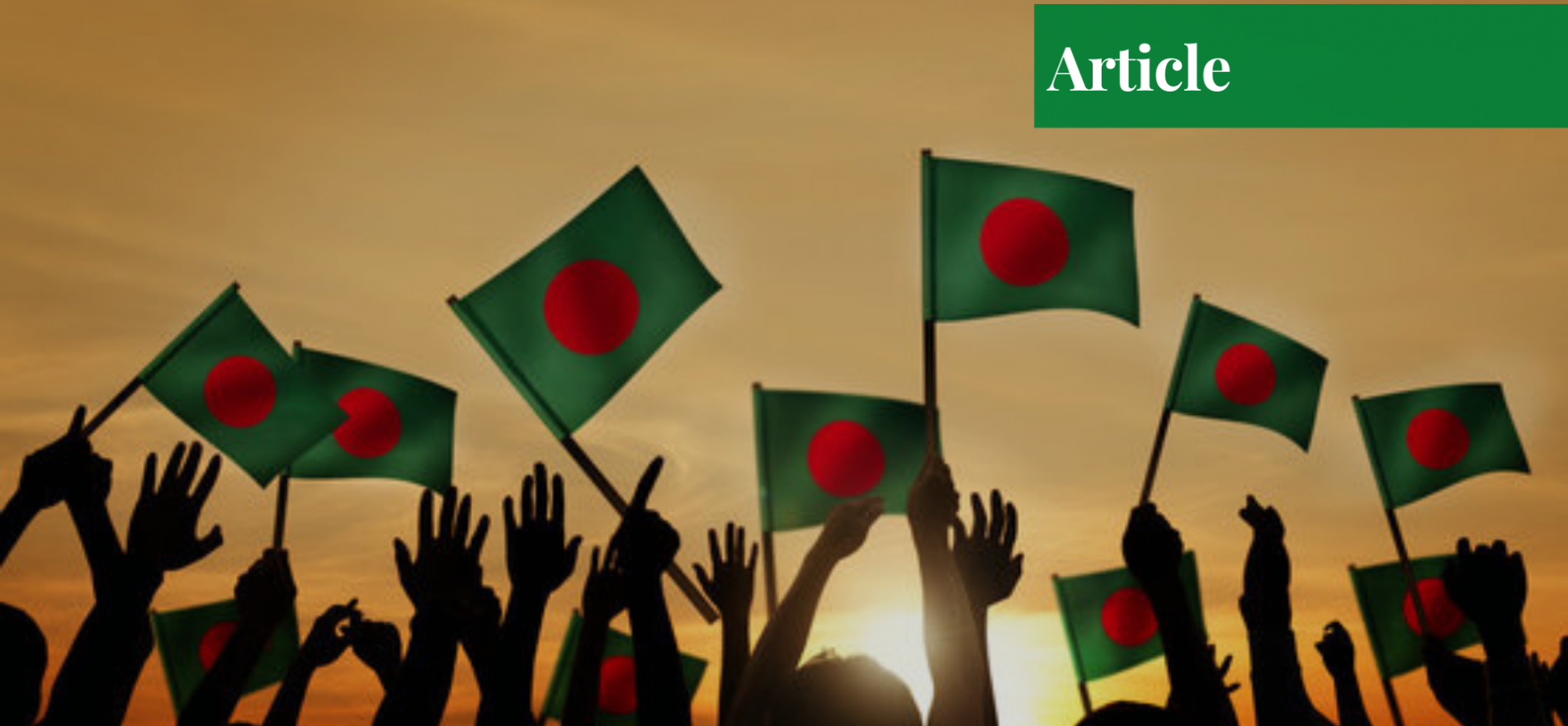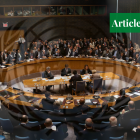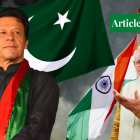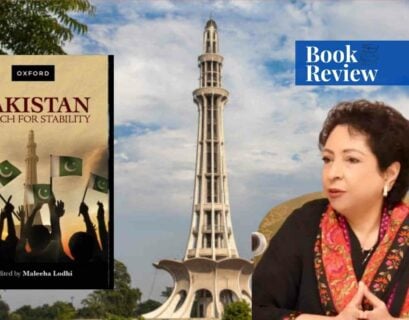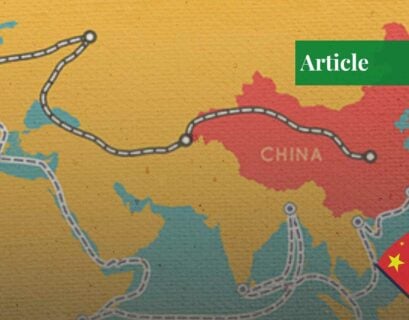Muzamil is a freelance writer with an expertise in global politics and international relations. He currently also works as a writer/contributor for Paradigm Shift. Apart from that, he loves to read and is socially active in philanthropic activities.
The Beginning of the Separation
Bangladesh achieved independence 50 years ago on 26th March from Jinnah’s original Pakistan. The rift started to appear after the December 1970 elections in which the Awami Muslim League of East Pakistan took the majority in the National Assembly where it was allotted 169 seats, out of which it scored 167.
The total strength of the National Assembly (NA) back then was 300. Now, with this whopping majority in the NA, Bangladeshi nationalists were exalted and they started to put things in order in their favor by forming the country’s central government. As things started to skew towards East Pakistan, it reinforced the establishment’s worst fears of being ruled by East Pakistan, not to mention the overwhelming superiority of Bengalis.
It was absolutely unacceptable to a liberal politician in the west wing of Pakistan and a chieftain of the Pakistan People’s Party (PPP), Mr. Zulfiqar Ali Bhutto. Now from December 1970 to March 1971, many events took place which paved the way for the ultimate separation of East Pakistan from West Pakistan.
A Divided State
Virtually, in East Pakistan, Mujib-ur-Rehman was practically in control, whereas in West Pakistan paranoia ran wild of becoming submissive to East Pakistan’s politics. In the first week of March, Yahya declared himself the boss of the state and thereby vowed to never let the democracy slip in the wake of the tensions between both wings — this meant that he was reinforcing Martial Law.
To this, Mujib-ur-Rehman showed resentment while completely rejecting and demanding for withdrawal of Martial Law on March 7. He felt infuriated with the idea of Bhutto trying to subvert the peaceful power transition. Bhutto, for one, insisted that majority rule could only be achieved if the Awami League decided to abandon its six-point programme, which sought much more autonomy for East Pakistan.
Bhutto tried to convince the nation that, before any constitution was to be framed, both parties, his PPP and Mujib’s Awami League, be given majority rule in West Pakistan and East Pakistan respectively. It was clear that Bhutto wanted to secure a top-notch position in the country by subduing the power transition claimed by Mujib on the majority rule.
A Political Impasse
Faced with the threat of an imminent political disaster, Yahya Khan rushed to Dhaka on 15 March to secure a pertinent solution to this political crisis. Negotiation teams of the Awami League and Yahya Khan had decided on a draft proclamation containing the details of an interim power transition agreement by 20 March.
The proposal being unacceptable to Bhutto led him into the talks with Mujib directly. Even with the inclusion of Bhutto, Dhaka negotiations remained inconclusive and a suitable political settlement remained elusive. The peak time of this conflict was when Yahya’s aide, Lieutenant General Peerzada, asked Mujib’s aide and a respectable jurist, Justice Cornelius, to postpone the meeting between both of them in which a suitable proposition drafted by the Mujib side was to be discussed.
The length of the delay was not informed from Yahya’s side and thus with each passing day, the inevitable confrontation grew even more. With the decision to use military force to resolve the crisis, the impasse was eventually broken. Most people claim that the military choice was part of a well-thought-out plan.
The army action, according to popular opinion in West Pakistan, was a necessary preemptive strike to prevent the Awami League from dismembering the region. Yahya, on the other hand, was generally believed to have dragged his feet on the talks with Mujib in order to plan for a military operation.
The 1971 War
On 26th March, Yahya proclaimed to have ordered the armed forces against the elements who tried to dismember Pakistan from within. Although the military’s Operation Searchlight in East Pakistan began in March 1971, the time between the elections and the brutal military operations clearly demonstrated how the egos of a few West Pakistani politicians clashed with the military leadership’s ignorance and inability to comprehend and resolve political issues, yet they claimed to be the torchbearers of democracy.
Had Punjabi-Muhajir military-bureaucratic leadership honored the results of the 1970 elections, we would have been living peacefully in United Pakistan, as was envisioned by Mr. Muhammad Ali Jinnah, father of the nation. However, this would have been in direct contrast to what their vested material interests demanded.
50 Years of Independence and Success
Today marks the 50th anniversary of our misgivings, failure to reconcile, and systematic steps towards megalomania. If you just browse, you would know how wisely Bangladesh, formerly East Pakistan, has been overcoming challenges so far that have come its way and how far it has come in its march towards a glorified future.
Bangladesh has similar dynamics to that of most South Asian nations. It is impoverished and overpopulated, undereducated and corrupt, vulnerable to both natural disasters and terrorism. It is energy-deficient and ridden with industrial anomalies, similar to that of Pakistan. Like Pakistan, politics is polarized, public-sector corruption is rampant, tax enforcement is equally poor, and state service delivery is woefully inadequate. Yet, it is outpacing Pakistan on its social and economic scale with quite a length.
Surprisingly, there are some differences. Analysts today opine that Bangladesh is on a path to become the next Asian Tiger. If we take a short glimpse of the year 2018 statistics, its economic growth rate (7.8%) is almost on the same percentage as that of India but way ahead of that of Pakistan’s (5.8%). The debt per capita for Bangladesh is almost half of that of Pakistan.
Foreign exchange reserves are three times more than that of Pakistan. Bangladesh is no producer of cotton but its market share is way bigger than that of Pakistan’s most cherished textile industry. Back in 1971, its exports were zilch and now they have surpassed Pakistan by more than $10 billion.
Much to our dismay, 14% of external debt to GDP gives Bangladesh a lot more than a breathing space to develop its financial structure to generate a self-supporting revenue base. On the other hand, exports of more than $40 billion give an environment conducive for both foreign investment and currency stabilization to take place. IMF depicted back in 2018 that if Bangladesh continued to grow with the strength it possessed, it would beat India in the economic race in the near future.
Even on social narrative, Bangladesh is not lagging behind, as human development is the key to their success. Prioritizing educational standards has resulted in immense social uplift for Bangladesh; about half of it going to primary education. Free textbooks are given to students every year and about 350 million were distributed in 2019 alone.
Most government schools offer co-education with a strict focus on nurturing a student through sports and cultural events. This helps a student bring his best both in academia and co-curricular activities. Not only that, from developing his science-based skills to developing gender and religious tolerance, these schools invest heavily to instill in their pupil a personality which might be needed to integrate into a global supply chain workforce.
Gender equality echoed widely in Bangladesh and considered one of the most important tenets of its bright future. Millions of women, especially those who are single wage earners, have been given opportunities from the textile industry of Bangladesh. According to International Labor Organization (ILO), Bangladeshi women have a much larger representation (33.2%) in the working sector as compared to Pakistan (25%).
A micro-financing facility is also made available for females on the condition of them being functionally literate. Similarly, many businesses promote the hiring of female cyclists and motorcyclists for customer services and agricultural-info dissemination in rural areas, resulting in gender-neutral job opportunities.
As opposed to Pakistan’s 220 million plus people, Bangladesh has nearly 165 million people now as compared to that of 1951 census when formerly East Pakistan (now Bangladesh) had about 42 million people and West Pakistan had 33.7 million individuals. In Bangladesh, long-term population planning campaigns were instituted to minimize fertility, and in Pakistan, no such movement, or even a start of any, can be seen.
The health sector is equally impressive as Bangladesh has fewer deaths after birth than in Pakistan. The life expectancy ratio is favorable (72.15 years) as compared to Pakistan (67.5 years). How did Bangladesh pull off such a remarkable societal and economic structure in just 50 years when Pakistan could not do it in more than 7 decades, especially when the former has no army, no nuclear weapons, and a lack of bureaucratic professionals in large numbers?
The Reason Behind the Success
If Bangladesh had strayed from its founder’s firm commitment to a secular polity, all of these policy initiatives would have been in vain. In Bangladesh, parties that promoted non-constitutional regimes were barred from running for office, denying clerics a political forum from which they could have criticized social and human development projects along with vehemently opposing international policies based on religious dogma and conventional mindset with no space for growth.
The result came in the form of a public mindset which approves of civic duties than a moral one when it comes to national issues. Apart from the induction of non-discriminatory education and cultural integration backed by the Government’s proactive policies, this has what probably made Bangladesh the most inclusive and religiously secular polity among most of the South Asian nations of today.
Any analysis of Bangladesh’s ‘Can do’ attitude would probably unearth the crucial role played by its political and economic forces. There isn’t a fast remedy to anything but wise decisions which come after learning from your mistakes.
If you see Bangladesh thriving, you cannot ignore that there is a perennial commitment to multi-dimensional tasking – fending off fundamentalism and militancy; religious moderation and cultural tolerance; the continuation of elected government-mandated economic and foreign policies; an increasingly trained and groomed population with a significant female presence; economic cooperation and non-adversarial ties with neighbors.
The Difference
In a nutshell, Bangladesh and Pakistan are two distinct nations because their perceptions with respect to their national interests vary in different ways altogether. Bangladesh sees human development and economic growth as key to its potential success. It faces serious water and border disputes with India, and it is bullied by its larger neighbor on numerous issues such as illegal immigration, drugs, and so on.
However, its fundamental priorities have not changed their discourse. Exports to increase, unemployment to reduce, health to improve, dependency on loans and aid to shorten, and microcredit to expand are some of the factors that have venerated Bangladesh to a likely perception of becoming an Asian Tiger.
On the other hand, all these core beliefs for Pakistan come second. The majority of national efforts are still aimed at containing India. As a result, Pakistan’s relations with Afghanistan and Iran are strained, with each accusing the other of being too loyal to India. In the 1990s, however, the most costly result of the security state mentality was the fostering of extra-state actors. Like Pakistan, Bangladesh is torn apart by internal schisms too.
Nonetheless, since it is more multicultural and liberal, the civil society and activist intelligentsia have been able to prevent armed groups from seizing power. Also, despite the fact that elected or quasi-elected Bangladeshi leaders are often corrupt and inept, they don’t just support decisions; they actually make them. These are some of the lessons Pakistan should ponder over rather than investing in military weapons and other jingoistic attitudes.
Recently, Pakistan has offered a hand in bolstering economic, political, and cultural relations with Bangladesh. As Dr. Moonis Ahmer, a renowned professor of International Relations at the University of Karachi, suggested that it’s high time for Pakistan and Bangladesh to bury their bitter past and work enthusiastically together for a progressive future.
Although this reconciliation won’t come easy, saner minds from both sides should invest their time and resources to bridge the gap between the two in order to secure a formidable edge in the ever-changing geopolitical environment.
If you want to submit your articles and/or research papers, please check the Submissions page.
The views and opinions expressed in this article/paper are the author’s own and do not necessarily reflect the editorial position of Paradigm Shift.
